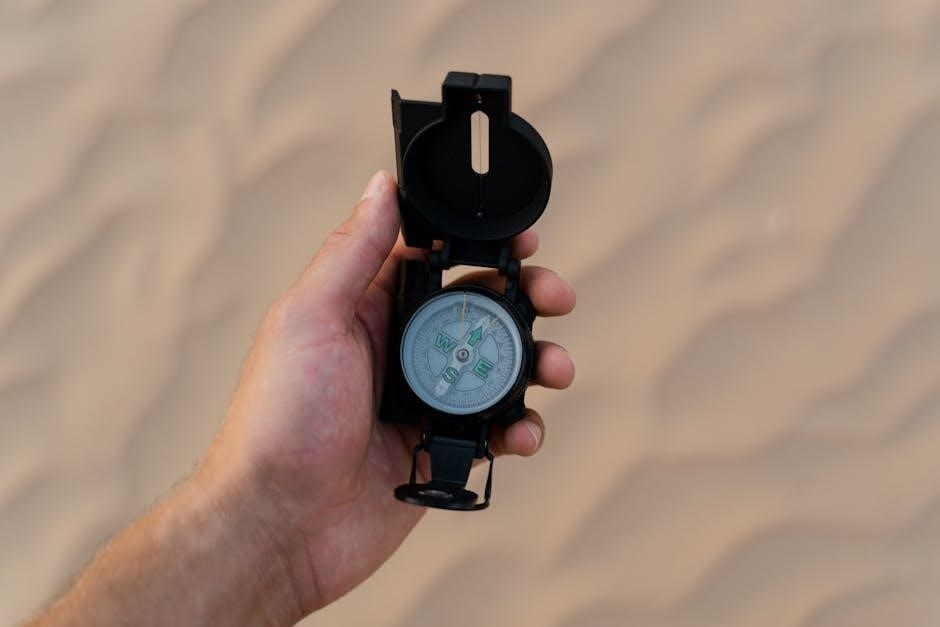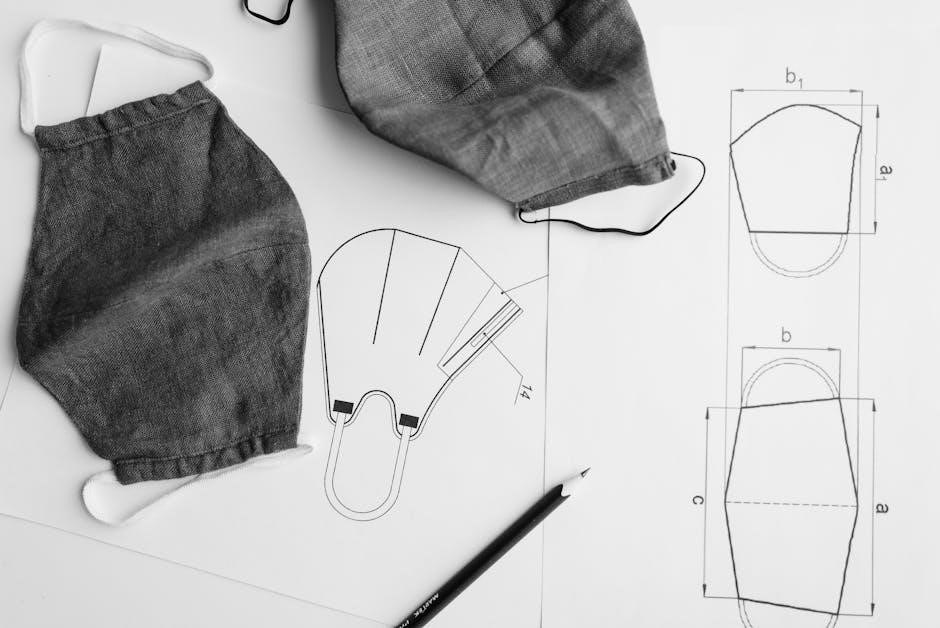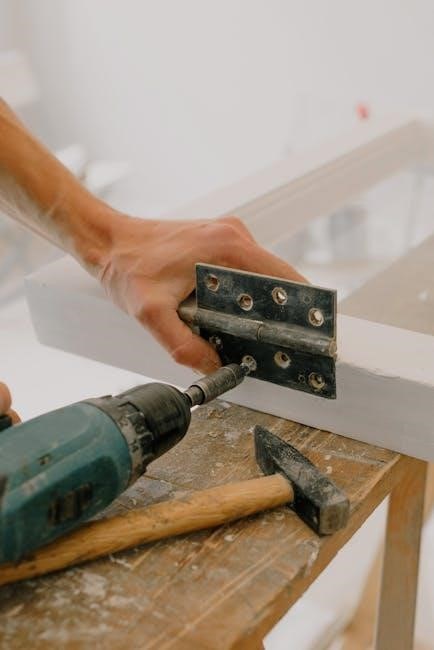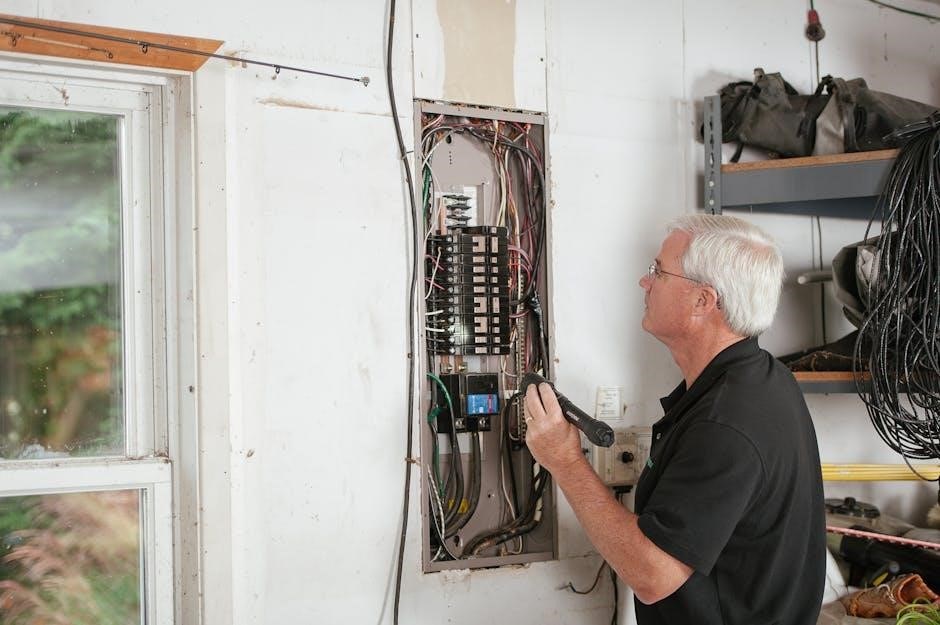Enhance your Glock’s safety features with a manual safety installation, designed to prevent accidental discharges and provide an added layer of control, ideal for enthusiasts and professionals alike.
Why Install a Manual Safety on Your Glock?

Installing a manual safety on your Glock provides an additional layer of control, reducing the risk of unintentional discharges. It offers peace of mind for users who prefer external safety mechanisms, especially in high-stress situations or for tactical applications. This modification is particularly popular among professionals and enthusiasts who seek enhanced safety features. The manual safety also serves as a personal preference for those accustomed to firearms with external safeties. While Glock’s Safe Action System is renowned for reliability, a manual safety adds an extra precautionary measure. However, it’s important to weigh the benefits against potential impacts on the pistol’s original design and functionality.
Overview of the Glock Safe Action System
Glock’s Safe Action System is a proprietary trigger mechanism designed for reliability and safety. It features three passive safety systems: the trigger safety, firing pin safety, and drop safety. These components ensure the pistol fires only when the trigger is intentionally pressed. The trigger safety prevents accidental discharge by requiring a full press, while the firing pin safety blocks the striker unless the trigger is fully engaged. The drop safety stops the striker from releasing if the pistol is dropped. This system is renowned for minimizing accidental discharges without the need for an external manual safety, making it a cornerstone of Glock’s reputation for reliability.

Understanding the Glock Manual Safety
A manual safety for Glock pistols is an optional feature that adds a thumb-operated lever, providing an additional layer of control and versatility for users seeking enhanced safety.
Types of Manual Safeties Available for Glock Pistols
Several manual safety options are available for Glock pistols, catering to different preferences and needs. The Glock Manual Safety Kit (MSK) is a popular choice, offering a thumb-operated lever for added control. Another option is the Cominolli Safety, designed for seamless integration with the Glock frame. Additionally, the RDIH Tactical Safety System provides a thumb safety by replacing the trigger housing. These safeties are compatible with various Glock models, including the 17, 19, and 35, ensuring versatility for users seeking enhanced safety features.
- Thumb safeties for right-handed users.
- Universal designs for broader compatibility.
- Models with ergonomic levers for intuitive operation.
Pros and Cons of Adding a Manual Safety
Adding a manual safety to your Glock offers several advantages, including enhanced control and prevention of accidental discharges. It provides an additional layer of safety, especially during holstering or handling. However, installation requires precision, as improper fitting can affect reliability. The process involves modifying the frame and may void the factory warranty. Some users find the added bulk inconvenient, while others appreciate the peace of mind it brings. Weighing these factors is crucial to decide if a manual safety aligns with your needs and preferences.

Tools and Parts Required for Installation

Essential tools include milling bits, drill presses, and precision measuring instruments. Parts like the manual safety kit, trigger components, and frame modification tools are necessary for installation;
Essential Tools for the Installation Process
The installation of a manual safety on a Glock requires specialized tools, including a milling bit for cutting the safety lever slot and a drill press for precise frame modifications. A set of precision measuring tools, such as calipers and a micrometer, ensures accurate measurements. Additionally, a trigger pull gauge and a punch set are necessary for adjusting and fitting components. Safety glasses and a vice are recommended to maintain safety and stability during the process. These tools enable a professional-grade installation, ensuring reliability and functionality of the added safety mechanism.
Recommended Parts and Kits for Manual Safety
For a Glock manual safety installation, the MSK (Manual Safety Kit) is highly recommended. It includes a safety lever, spring, and instructional guide. Additionally, aftermarket kits like the RDIH Tactical Safety System offer thumb safety solutions. These kits are designed for compatibility with various Glock models, ensuring a seamless fit. They often include all necessary components, such as triggers and housing parts, to simplify the installation process. Choosing a reputable brand ensures reliability and maintains the pistol’s functionality while adding the desired safety feature.

Step-by-Step Installation Guide

Prepare the frame, cut the safety slot, and install the manual safety lever, ensuring precise alignment and secure fitting for optimal functionality and reliability.
Preparing the Pistol Frame for Modification
To begin the installation, ensure the Glock is unloaded and disassembled to access the frame. Use a micrometer to measure 2.173 inches from the center of the trigger pin toward the rear, marking the location for the safety lever. This precise measurement ensures proper alignment. Clean the area to remove any debris and apply a small amount of lubricant to prevent metal shavings from sticking during the cutting process. Secure the frame in a vice or jig to maintain stability. Double-check the measurements before proceeding to the cutting phase, as accuracy is critical for reliable functionality.
Cutting the Slot for the Safety Lever
The slot for the safety lever must be precisely cut into the Glock frame. Using a milling bit or precision cutter, create a notch measuring 0.093 inches in width and 0.4 inches in depth. Position the cut 2.173 inches from the trigger pin housing, aligning it toward the rear of the frame. Maintain steady control to avoid damaging surrounding material. Use a micrometer to verify dimensions and ensure the slot is smooth and even. This step requires patience and accuracy, as improper cutting can affect the safety’s functionality and the pistol’s overall reliability.
Installing the Manual Safety Device

After preparing the frame, carefully install the manual safety device into the slot. Align the lever with the notch, ensuring a snug fit. Gently press the safety into place until it clicks securely. Use a punch or tool to seat the retaining pin, ensuring the lever is stable and functions smoothly. Test the safety by engaging and disengaging it repeatedly to confirm proper operation. Ensure the device does not interfere with the trigger mechanism or other components. Proper installation ensures the safety operates reliably, enhancing control without compromising the pistol’s performance or reliability.

Cost and Labor Considerations
The estimated cost for a Glock manual safety installation is $138, covering parts and labor, including slot cutting and safety lever installation.
Estimated Cost for Parts and Labor
The total cost for a Glock manual safety installation is approximately $138, which includes both parts and labor. The parts themselves, such as the safety lever and spring, typically range between $60 to $80. Labor costs, which cover the precision cutting of the frame and the installation of the safety device, usually fall between $60 to $70. Prices may vary slightly depending on the installer or the specific kit chosen. This investment enhances safety by preventing unintentional discharges and offers long-term reliability for your firearm.

Potential Risks and Considerations
Installing a manual safety on a Glock may compromise its reliability, as it was not originally designed with such a feature, potentially affecting functionality and performance.
Impact on Pistol Reliability and Functionality
Installing a manual safety on a Glock may interfere with its Safe Action System, potentially compromising reliability. The pistol’s internal mechanisms could be altered, leading to unintended consequences like malfunctions or inconsistent performance. While the manual safety provides an additional layer of control, it may disrupt the seamless operation of the firearm, which was not originally designed to include such a feature. This modification could undermine the system’s integrity, making it crucial to weigh the benefits against potential risks to functionality and performance.
Installing a manual safety on your Glock offers added control but may compromise reliability. Weigh the benefits against potential risks and consider professional installation for optimal results.
Key Takeaways for Glock Manual Safety Installation
Installing a manual safety on your Glock can enhance control and safety, but it requires precision and expertise. Ensure proper tools and kits are used, and consider professional labor to avoid reliability issues. The process involves modifying the frame and installing the safety lever, costing around $138 for parts and labor. While it adds a layer of security, it may not be necessary for all users, as Glocks are designed with internal safety mechanisms. Weigh the benefits and risks before proceeding with the installation.


